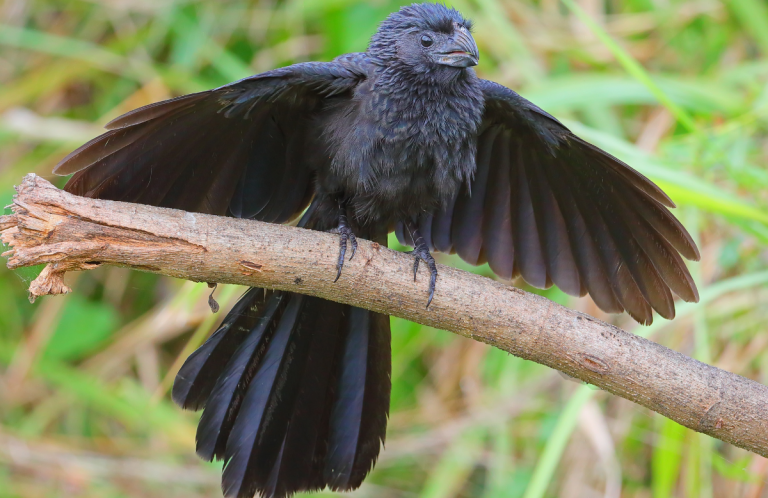 The Golden-tailed Parrotlet is a rarely seen and poorly known species, well-camouflaged by its bright green plumage. This small parrot measures only around six inches long. A short, golden-yellow tail and dark scapulars (shoulder feathers) characterize the species.
The Golden-tailed Parrotlet is a rarely seen and poorly known species, well-camouflaged by its bright green plumage. This small parrot measures only around six inches long. A short, golden-yellow tail and dark scapulars (shoulder feathers) characterize the species.
Like other birds found only in the Atlantic Forest of eastern Brazil, such as Pinto's Spinetail, the Golden-tailed Parrotlet is threatened by habitat loss.
Fruit Followers
Although they may be among the most common parrots in their area, Golden-tailed Parrotlets are rarely seen. They tend to stay high in the tree canopy and are unusually quiet (for a parrot). When they are seen, they are usually spied zipping overhead in pairs or small flocks.
Golden-tailed Parrotlets are often observed moving between distant forest fragments. They are thought to make seasonal movements that follow the fruiting cycles of favored food trees, much like other parrots such as Great Green Macaw. Although little is known about the parrotlet's diet, it likely consists of fruits, berries, seeds, and nuts.
Sign up for ABC's eNews to learn how you can help protect birds
Parrotlet Pairing
Male and female Golden-tailed Parrotlets appear very similar, with the females slightly duller in color. They likely form long-term pair bonds, similar to Red-masked Parakeet, Military Macaw and other members of the parrot family.
This parrotlet's breeding biology is still largely unknown. They have been recorded excavating nest holes in active termite nests, a nesting strategy which is thought to deter predators. The birds have also been observed using the nest holes of other species of parakeet, trogon, and kingfisher.

Golden-tailed Parrotlets by Leo Patrial
Refuges in the Rainforest
The Golden-tailed Parrotlet may be somewhat resilient in the face of forest fragmentation. It may be under-recorded due to its secretive habits. However, its decline is still of concern due to the extensive habitat loss within its range. Only two percent of original forest remains in the Atlantic Forest of northeast Brazil.
This parrotlet may be seen at several reserves supported by ABC, including the REGUA-Guapi Assu Ecological Reserve and the Serra do Urubu Reserve, where ABC and SAVE Brasil are collaborating to buy additional land.
You can help: Donate today and help us take advantage of this opportunity to save some of Brazil's rarest species. Or learn more about this effort to conserve the Serra do Urubu's unique forest.
Donate to support ABC's conservation mission!



















































